Jody Scheckter: ‘Lewis Hamilton bought my Monaco penthouse’
Matt Bishop meets Jody Scheckter: the 1979 F1 world champion on money, fame and why he was called ‘Sideways Scheckter’

Getty Images
When you consider that Jody Scheckter’s driving style earned him the nickname ‘Sideways Scheckter’ in his early days, that he continued to drive racing cars that way right up to and throughout his Formula 1 career, that he won 10 F1 grands prix out of 112 starts, and that he became F1 world champion in a Ferrari – the seventh of only nine drivers to have done that in the Scuderia’s 76-year F1 roll of honour – it is surprising to me that he tends to feature so low on most ‘best ever F1 driver’ rankings. Perhaps it is because, unlike some of his now more-lauded contemporaries – Gilles Villeneuve and Ronnie Peterson for example – he survived his F1 career with nary a scratch. Or maybe it is because, unlike others – Niki Lauda and James Hunt spring to mind – he did not hang around once he had decided to retire. No, while they continued to earn a crust in and around F1 – Hunt in the commentary box and Lauda in various highly paid consultancies for a number of F1 teams – Scheckter exited stage left and made a ton of money in a business entirely unrelated to motor sport.

Scheckter, leading, at Brands Hatch in his F3 Merlyn Mk21, 1971.
But, before we talk about FATS (Firearms Training Simulation), which he founded in Atlanta, Georgia in 1984, let’s go back to his early days, in East London, Eastern Cape province, on the south-eastern coast of South Africa. “I was useless at school, but I loved hanging out in my dad’s workshop,” he remembers. “Racing was big in South Africa back then, especially around the East London area. My uncle had raced at the what’s-name [Prince George] circuit in East London as long ago as 1937. It hosted the South African Grand Prix in the 1960s [non-championship F1 races in 1960, 1961 and 1966, and world championship-status grands prix in 1962, 1963 and 1965] and some of the F1 drivers used to stay at our house, which was cool.”
“Really?” I ask. “Which ones?”
“Oh I dunno.”
Jody’s memory is funny that way. He recalls all sorts of arcane details from way back – as you will soon see – yet occasionally he fails to remember aspects of his remarkable story that normal folk like you and me cannot imagine forgetting, such as which F1 driver was staying in the spare room when he was a kid. But so it is. “Yeah, sorry, I can’t remember. Anyway, when I left school I became an apprentice mechanic for my dad. I worked on cars and motorbikes, and when I was 18 I got my driver’s licence and entered a local race. I got hold of a Renault R8 Gordini. I prepped it myself – engine, gearbox, everything – and I went racing in it.
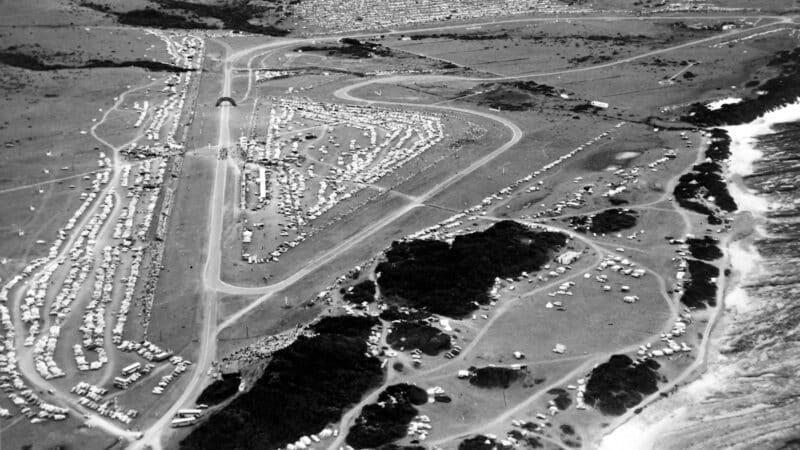
Prince George Circuit, where Jody’s uncle raced
Alamy
“In terms of fixing it up, I didn’t really know what I was doing, so I copied this brilliant guy who was the head of Renault’s competition department – Scamp Porter – and at one point he took a look at my car and he said, ‘That’s exactly the same as mine.’ Well, it was, so I kind of shrugged. Anyway, it was then that the Sideways Scheckter thing began. The R8 had a locked diff, so you had to slide it to make it go quick. I guess it was kind of habit-forming. Sliding race cars became my style. I think it helped me on street circuits when I got to F1. I was always good on street circuits, Long Beach and Monaco especially. Anyway, I started winning in that R8, and Ford took notice, so they offered me a drive in a Formula Ford race at Kyalami. I was 20.”
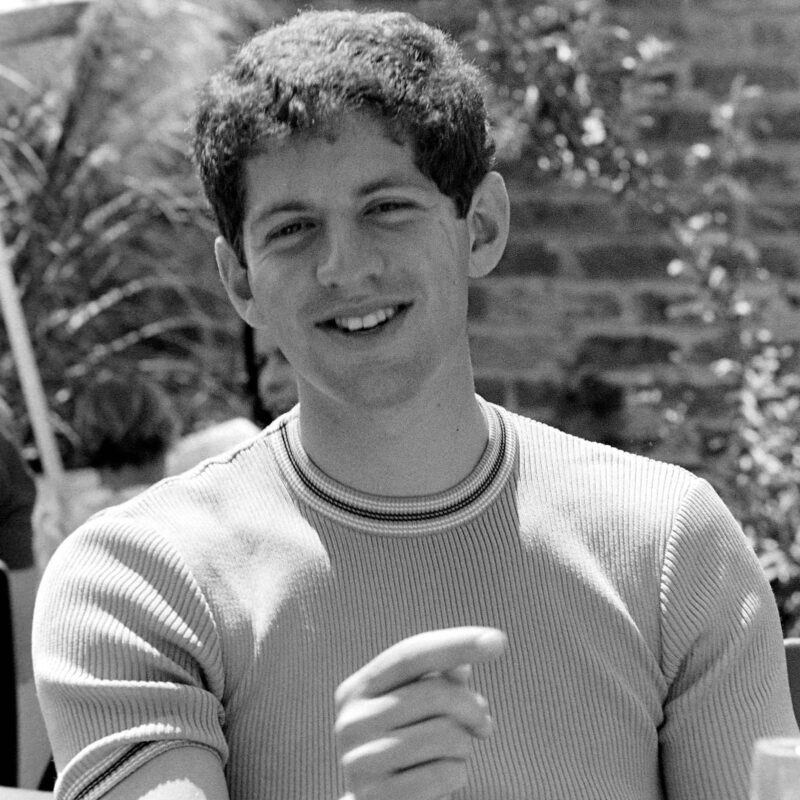
Scheckter, ’71
Stories about that first outing in a single-seater have passed into racing folklore, so I want to ask him about a particularly juicy aspect of the legend. “Is it true that you spun 14 times that weekend?”
“Oh I dunno. I spun a lot, always at the same corner, at Clubhouse [a tricky medium-speed left-hander]. I later found out that the car’s rear suspension was loose, so I had no chance. Anyway, they fixed it for the next races, I got better, and I did OK.”
He did indeed. He scored more points than any other local driver, and his prize was 1000 rand and an air ticket to the other London, in the UK. Jody was on his way.
“When I got to England [in 1971], I moved into a flat in Baker Street [central London], with two racing journalists, Andrew Marriott and Mike Doodson, and I spent my prize money on the famous ‘Magic Merlyn’ Formula Ford car [a Merlyn MkIIA] that Colin Vandervell and Emerson Fittipaldi had raced successfully before me [and which Scheckter would sell on to Frank Sytner, then would later own again himself], and I did OK in it.” OK? More than OK, actually, because he put it on the pole first time out, then he started either shunting it or winning in it. He soon progressed to a Merlyn Mk21 Formula 3 car, in which he won races at Thruxton, Oulton Park and Mallory Park.
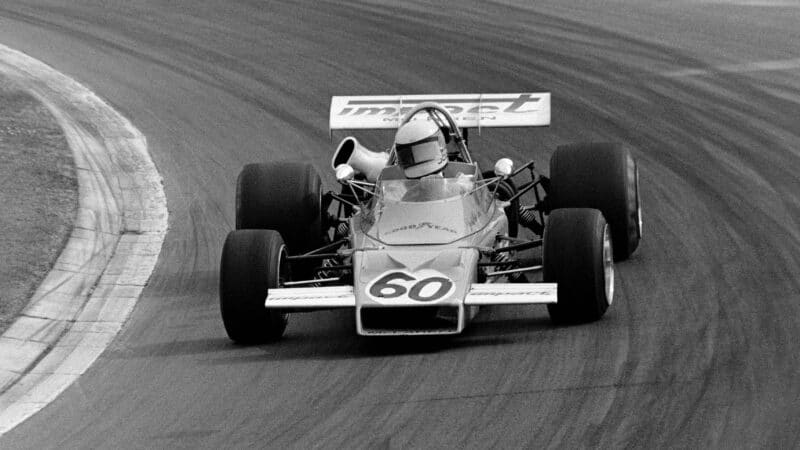
It was here at Crystal Palace in 1972, in a McLaren, that Scheckter started to believe he could make it as a successful racing driver
“I liked the feel of F3 cars much better than Formula Ford cars. F3 cars had proper slicks whereas Formula Ford cars had road-car tyres. I was doing OK except that I didn’t have any money. I survived on Indian food, which was very cheap in London back then. You could get a decent curry for 20p. Anyway, to earn a few pounds I took a job as a bracket welder in the Merlyn factory.”
“I survived on Indian food, which was very cheap in London back then. A decent curry was 20p”
On track that season, 1971, Scheckter was no longer a ‘what’s-name’ – a verbal tic to which he resorts often when searching for a word – but he was instead making a biggish name for himself, winning races in F3, and for 1972 he was offered a brand-new works Formula 2 McLaren M21. “When I won at Crystal Palace in that car, for the first time I thought, ‘Maybe I can go all the way.’ Mike Hailwood was on the pole and the field was full of F1 drivers [Hailwood, Carlos Reutemann, François Cevert, Jean-Pierre Beltoise, Vic Elford and Mike Beuttler]. Reutemann won the first heat, Hailwood won the second, and I won the final. When I overtook Mike at the end, and I held on to beat him by a couple of seconds, that felt good. Carlos was third, only a second behind Mike. I said to myself afterwards, ‘Maybe I can be an F1 driver.’”

The South African’s F1 debut came in an outdated McLaren M19A at Watkins Glen in 1972
Getty Images
He did not race in all the European F2 Championship rounds in 1972, but he bagged two more good points hauls, at Mallory Park and Enna-Pergusa, and, prompted by Lotus offering him a guest F1 drive at Watkins Glen at the end of the year, McLaren stepped in and proposed the same deal, wherein he would race at the Glen alongside their regular stars Denny Hulme and Peter Revson. Scheckter accepted the McLaren deal. He qualified eighth, in an older-spec M19 than the two established F1 aces were driving – an M19A instead of an M19C – and he ran third until a spin dropped him to ninth. “OK, I spun at Turn 1 on a wet patch, because it was beginning to spit with rain, but I’d done OK.”
“Ken Tyrrell shouted in your face at point-blank range. He drummed discipline into my driving”
As a result McLaren ran him in a few more grands prix. “My first race in 1973 was at home at Kyalami – I’d missed Argentina and Brazil – and I qualified third in an M19A, but I had trouble in the race and I ended up ninth. My next race was at Paul Ricard, where they’d given me an M23, the new car, for the first time. I cranked the rear wing almost flat so as to be quick on the long straight, because I didn’t mind the car sliding, and I qualified second, alongside Jackie Stewart’s Tyrrell. That felt good.” Scheckter led for 42 laps, then he tangled with Fittipaldi’s Lotus while they were lapping a backmarker, ending both their races. Emerson called Jody “a madman and a menace”. “He blamed me,” Scheckter remembers, “but I was in the right. I told him, ‘Yeah, whatever, I’d do it again.’”
In the next grand prix, at Silverstone, Scheckter was in the wrong. He spun on the first lap, triggering a multi-car accident. “I’d qualified sixth, I’d had a good start, and I was running fourth as we approached the last corner, Woodcote, which was superfast in those days, no chicane. Suddenly, the car jumped on me, at high speed, and I was in the wall. It was a huge shunt. I don’t know how I didn’t get hurt. I’ve been lucky that way. I only ever hurt myself once, at Österreichring in the Tyrrell six-wheeler in 1976, but even then I only gashed my leg.”
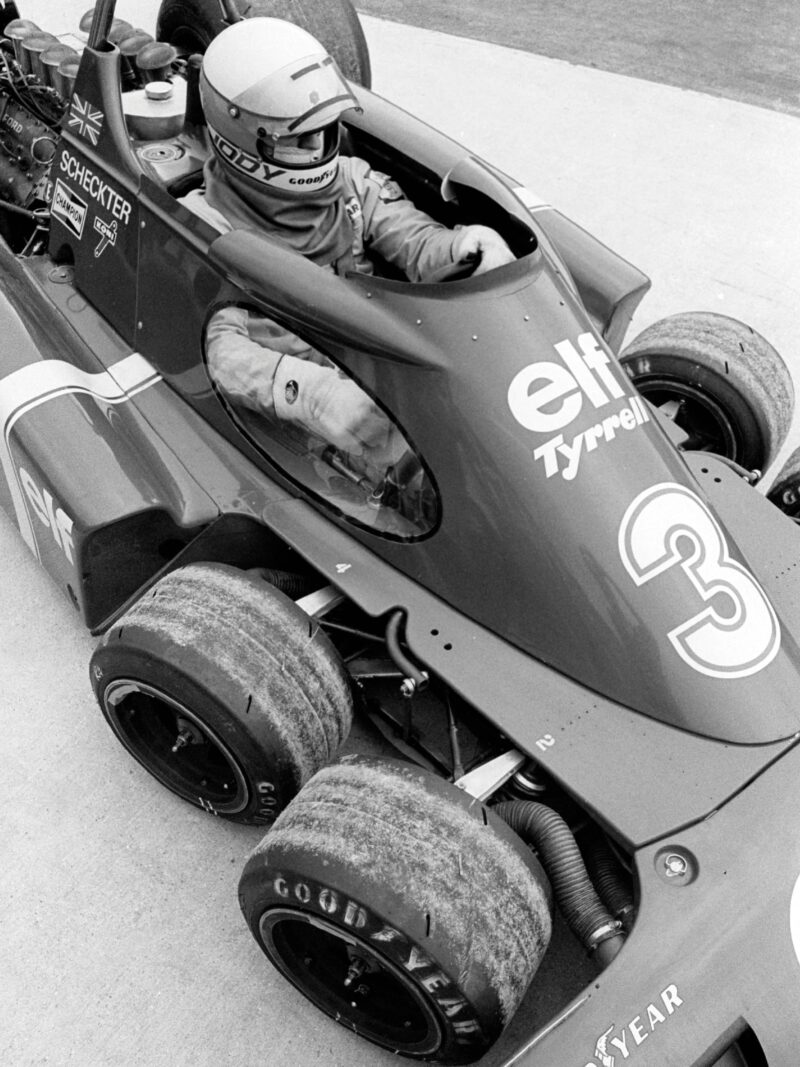
Scheckter was no fan of the six-wheeled Tyrrell P34, yet he won the 1976 Swedish GP driving it and ended the season third
He joined Tyrrell for 1974, where he had the biggest shoes to fill: those of the retiring Stewart. He had expected his team-mate to be Cevert. However, in qualifying for the last grand prix of 1973, at Watkins Glen, Scheckter had powered his McLaren towards the fast uphill esses that led onto the back straight, and there he had found the wreckage of the Tyrrell that the man whom he had been expecting to partner the following year had just crashed. “I saw the nose of his car in the middle of the circuit, and the rest of it in the guardrail. So I stopped, I jumped out, and I ran towards the car to start trying to get him out. I tried to release his seatbelts, the car was sparking, and fire was what we all feared most back then. I put my arms up to stop the cars behind. I can’t remember much more now. Maybe I’ve blocked it out, or maybe I didn’t look too closely. Jackie later said to me, ‘You were lucky you didn’t look, or you don’t remember.’ François was cut in half. It was the first time I’d seen death up close in racing. Some people said the experience made me a calmer driver afterwards, but I don’t think so. I think that was Ken’s [Tyrrell] famous froth jobs, where he shouted in your face at point-blank range. He drummed a bit more discipline into my driving that way.
“I met Mr Ferrari. It was like a mafia scene. An old man wearing dark glasses, in a dark office”
“Those three seasons at Tyrrell [1974, 1975, and 1976] were a mixed bag for me. My team-mate, Patrick Depailler, was a lovely guy…” – then, laughing, and putting on a French accent – “…but with Patrick, the car was always either ‘fantastique’ or ‘a piece of sheet’. We were both new to Tyrrell, and we started to collaborate. I remember once asking him how he was taking a certain corner, and he replied, ‘Quite flat.’ So I tried it and I nearly had a big shunt. It turned out that by ‘quite flat’ he’d meant ‘almost flat’. I guess an important detail had been lost in translation, because Patrick was old-school French. He’d have a glass of wine before practice.

Zandvoort, August 1979: a second-place for Ferrari’s Scheckter kept him at the summit of the drivers’ championship
LAT Images
“But that first Tyrrell season, 1974, was good for me. I won a grand prix for the first time, at Anderstorp, but I don’t remember a feeling of euphoria. I like a party as much as the next man, but I didn’t used to party during the F1 season. That wasn’t my style. Then I won again at Brands Hatch. It was getting close for the world championship between me, Fittipaldi and [Clay] Regazzoni, and I was in contention right to the last race, at Watkins Glen, but in the end Fittipaldi won it.
“The next year wasn’t quite so good, but I won my home grand prix, at Kyalami, which was nice, because my family were all there to enjoy it, and it was a good win because I’d had a big shunt in practice, so the mechanics had to put the car back together again, then the engine blew, so they had to fix it all over again. But I still managed to qualify the car third, even though it was basically a bag of bits, and I won the race the next day.
The next year, 1976, the year of the Tyrrell six-wheeler, was really disappointing. Yeah, I know I won at Anderstorp again, and I got a few podiums, but the concept of the car made no sense to me. Part of the rationale was that the four smaller front wheels would reduce frontal area, but actually it’s the rear wheels, which were miles bigger than the fronts on all F1 cars back then, that determined frontal area, not the fronts. Another part of the rationale was that, with six contact patches instead of four, braking would be better. In fact it was worse, because you had a 50% greater chance of lock-ups, and therefore a 50% greater need to ease off the brakes to get the wheels turning again, and that made braking worse, not better. One thing I’ll say for the car was that it was very driveable because of the extra front-end grip. I was sideways everywhere that year.
“Towards the middle of 1976 the Tyrrell team started listening to Patrick more than to me, because he loved the six-wheeler, so I began to feel I had to leave. Walter Wolf offered me the chance to drive for his new one-car team in 1977, and it was a lot more money than I’d been getting, so I said to my mechanic at Tyrrell, Roy Topp, ‘How about it?’ Roy agreed to come with me, and I helped persuade Peter Warr, the Lotus guy, to be team manager, and the car was designed by Patrick Head [actually Harvey Postlethwaite; Head was his deputy].
“Enzo Ferrari had first approached me back in my Tyrrell days, and we hadn’t done a deal then, but obviously it was good that he was interested. So I sent him a telex, asking if I could test the Wolf at Fiorano. Guess what? He said yes. The test went well, then we went down to Kyalami to do more testing, and I got on really well with Patrick there. I wish he’d stayed, but he left to join Frank Williams.
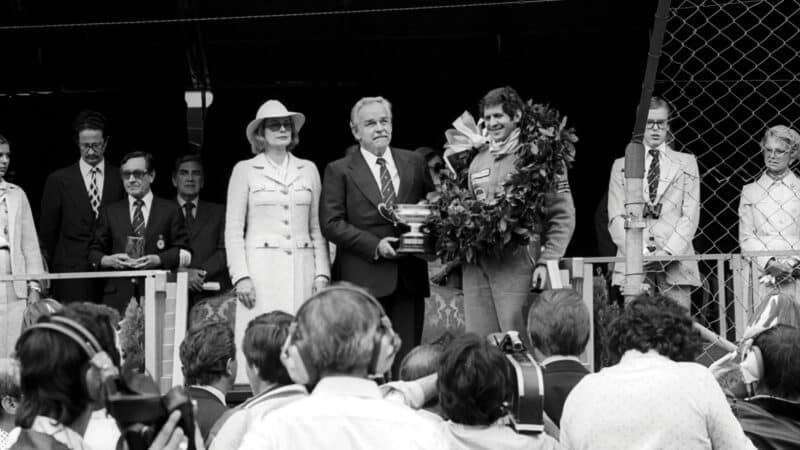
Among royalty at Monaco in 1977 after winning his second GP of the season for Wolf
Getty Images
“Anyway, we went to Argentina for the first race, and it was unbelievably hot. I qualified in the midfield, miles off James Hunt’s pole time in the McLaren, but the extreme heat caused problems for a lot of the cars and a lot of the drivers, and our car was a solid design and I was really fit by then. Towards the end of the race I was up to second, and Carlos Pace was leading in the Brabham-Alfa, but I was closing on him, and I could see that he was taking funny lines, struggling in the heat, and in the end he puked in his helmet I think, so I passed him and I took the win.” It was an extraordinary achievement: a victory for the brand-new Wolf team first time out.
“We won three grands prix that year –Argentina, Monaco and Canada – and I should have won the world championship. If Patrick had stayed, maybe I would have done. The next year, 1978, the Wolf was a boxy attempt at a wing car, and it was no good. But early that season Mr Ferrari came knocking again.
“He’d approached me before, in my Tyrrell days, as I say. That first time, I drove from Monaco to meet a Ferrari guy in a café on an autostrada somewhere in Italy, then we went to Maranello together, and I met Mr Ferrari. It was like a mafia scene: an old man with white hair, in a suit, wearing dark glasses, in a dark office, with bodyguards all around. His very first question was: ‘How much money do you want?’ I replied, ‘I’m too young to talk about money.’ We didn’t do a deal then. But they came after me again in 1978, as I say, and they were insistent this time. So I asked for a big number – a good whack of money – and they went for it. Piero [Ferrari, Enzo’s son] said I was the highest-paid F1 driver in 1979, but actually I think Lauda was getting more at Brabham.
“My deal hadn’t been announced yet, but Reutemann [who was Ferrari’s number-one driver in 1978] got to hear about it. I’d been told that I’d be the number-one driver for 1979, and he knew that, so I suggested we meet to discuss how we were going to work together in 1979. I was living in Monaco and he was living in Saint-Jean-Cap-Ferrat, which is a half-hour drive down the coast from Monaco, and he insisted we had to meet on neutral ground halfway between. Funny guy. Anyway, he decided to leave Ferrari to go to Lotus, so my team-mate in 1979 was Gilles Villeneuve.

Hitting the high notes at Zolder in 1979, with Scheckter on his way to winning the GP in a flat-12 Ferrari 312 T4
“Gilles won two early races – Kyalami and Long Beach – but I’d have won at Kyalami if I hadn’t had pitstop problems. My tyre change took 30sec, his took 20sec, and he beat me by 3sec. Even so, Gilles was quick, proper quick, so I thought, ‘I’ve got to raise my game.’ People thought he was a hooligan, but that was an act really. When we used to travel from Monaco to Maranello, he’d drive normally for most of the way, then a couple of miles from the factory he’d start wheelspinning and powersliding to impress the local tifosi. People said he was faster than I was in 1979, but he drove with no margin. For instance at Monaco I took the pole, not him, even though he kept his foot flat on the throttle when the car went momentarily airborne on the main straight beside the pits, hoping to nick a tenth. I always timed a gearchange for that moment, to be kind to the car. He did the same thing the next day, in the race, he broke a driveshaft, and I won. Also, I weighed more than he did, and F1 didn’t run ballast in those days. People don’t tend to factor in all those things.
“Gilles was good. He’d never have done the dirty on me, like Didier Pironi did on him at Imola”
“He didn’t let me win at Monza that year, either, which is another thing people often say. We were running 1-2 near the end of the race, and Ferrari’s policy was that you don’t fight each other when you’re running in line astern like that, so I started short-shifting to save the engine, changing up at 10,000rpm instead of 12,000rpm. Just behind me, he knew what I was doing, so he did the same. Neither of us was driving at ten-tenths at that point, although I put the hammer down on the last lap just to make sure. But I needn’t have, because Gilles was good like that. He’d never have done the dirty on me, like Didier Pironi did the dirty on him at Imola three years later. Anyway, I won the race and the championship that day at Monza, and I felt relief rather than joy. I’d done what I’d set out to do.
“I stayed close to Gilles after I retired from F1 [at the end of 1980] and when Pironi didn’t obey those team orders at Imola in 1982, and he stole a win off him, and Ferrari didn’t back him, Gilles was absolutely broken. Actually, he asked me to go with him to Ferrari to support him when he stated his grievances. Pironi had broken their agreement, no question about it. Two weeks later Gilles was dead. Incredibly sad.
“I’d retired already by then, and one of the reasons I did so was that, in my last season, 1980, Gilles was more competitive than I was. The Ferrari was crap, we were getting nowhere, and I thought, ‘I’ve won the championship already, so this just isn’t worth getting killed for.’ And also, for me, the magic of F1 had gone.”

Scheckter, leading, and Ferrari team-mate Gilles Villeneuve head the field at Monza, 1979; Jody would soon be F1’s new champion
Jody was still only 31, he was considerably fitter than most butchers’ dogs – for example he won the hugely popular World Superstars competition in 1981, beating a number of Olympians – he was well-off but not minted, and he was full of energy and ambition. He looked at inaugurating a rival to IROC (International Race of Champions) with Ford, then he negotiated the contracts with the MotoGP (then known as Grand Prix Motorcycling) riders for a series of non-championship races at Donington Park.
“Then, out of the blue, I found myself reading a magazine about weapon simulation systems, and I thought, ‘Maybe F1 levels of tech could improve that, and maybe I could do it?’ So I did, starting the business on the kitchen table. Soon I moved it to Hilton Head [South Carolina, US], then to Atlanta [Georgia, US], then it began to grow. I ran the company like an F1 team at war. I hadn’t thought I was going to make a ton of money. No, I just wanted to be successful, which isn’t exactly the same thing. But we did it for 12 years, from 1984 to 1996. We ended up with 280 employees, and in our last three years our sales totals were $29m, $60m and $100m. When I sold it, I did well.”
“I won the race and the championship that day at Monza, and I felt relief rather than joy”
He went back to the UK, where he bought a mansion in Hampshire and a large house in Kensington, London. From there he worked hard to support the developing race careers of his sons Toby and Tomas. At the time I remember that he was reluctant to admit publicly that Tomas, two years younger than Toby, was the greater prospect, but now there is no need for him to be so diplomatic: “Well, they were both good but Tomas did better.” He won races in karts and Formula Ford in South Africa, then he moved to the UK and won races in Formula Vauxhall Junior, Formula Opel Euroseries, Formula Euro Open by Nissan and British F3. In 2001, still only 20, he was contracted to Jaguar’s F1 team as a test and reserve driver. He appeared to be on the verge of following in Dad’s footsteps.
He might well have done exactly that, had he not been caught kerb-crawling in a company Jag in Northampton, for which offence he was fined and fired. “Stupid idiot, Bobby Rahal,” Jody barks two dozen years later, and the surname of the American racing legend is the only phoneme in our 90-minute interview that he speaks with manifest disdain. “Lauda, who took over from running Jaguar’s F1 team when Rahal got the boot, said he didn’t agree with it. Niki said they should have smacked Tomas on the wrist and kept him on. Anyway, it’s all ancient history now.” Tomas ended up going to the States, where he won races in IndyCar.
Jody David Scheckter is now 75, he is still remarkably fit, and he is living in Genoa, Italy. “Why Italy?” I ask him.
“Well, I started Laverstoke Park Farm, in Hampshire, in 1996. We worked really hard on it, and we made some great products – food that was as healthy and as tasty as possible –and most of our products won awards,” he begins. In the end, after 27 years, it was forced to close because it had been impossible to make it profitable, which was a great pity. At one time Jody had hens, chickens, ducks, geese, turkeys, wild boar, three breeds of pig, three breeds of sheep, three breeds of cattle, and even some water buffalo. I visited him there once, bought some of his produce that day, and I am here to tell you that his mozzarella and Roquefort were as good as anything I have ever tasted in Italy or France.
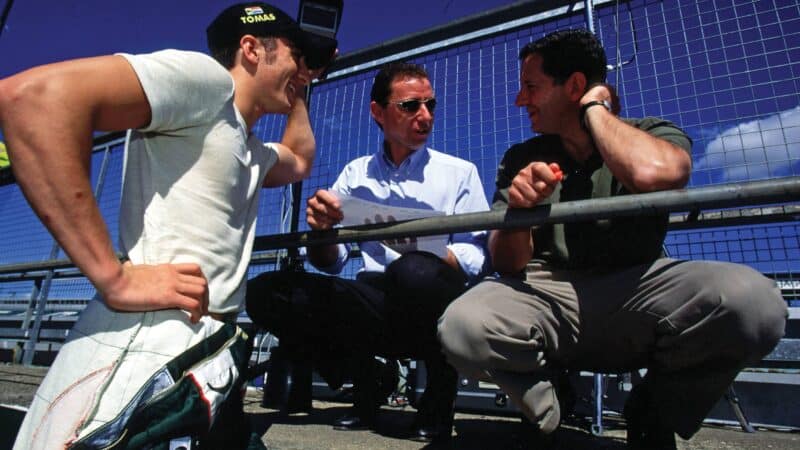
Jody’s son Tomas, left, became Jaguar’s F1 test driver in 2000 and later moved to America to race Indycars
Getty Images
As it happens mozzarella indirectly sparked his decision to move to Italy. “I was holidaying on the Amalfi Coast,” he continues. “One day I tasted some local mozzarella and it was fantastic, so I found the owner of the company that made it and I said to him, ‘Please teach me how to make mozzarella as good as yours.’ He replied, ‘Come to my factory.’ So I did. The region was so beautiful, so I thought, ‘Let’s give up our apartment in Monaco and take a place in Italy instead.’ So we did. Lewis [Hamilton] took over our Monaco apartment actually.”
Jody and I could prattle on all day, but that seems like a good moment at which to say thank you, and to let the 1979 F1 world champion go on his way. But, before I do so, I have one last question: “Do you still pay attention to F1?”
“I don’t go to grands prix, no, but I watch on TV. I’m friendly with Piero [Ferrari] and Zak [Brown]. Lewis is brilliant and Max [Verstappen], too. Lewis is cleaner though – I rate him as one of the very best of all time.”
“So were you, Jody,” I reply – and, nervous of appearing unctuous, I nonetheless tell him that, in 1977, when he almost won the F1 Drivers’ World Championship in a Wolf, he was the best racing driver in the world.
He snorts chummily, then says: “Wow! You must be smoking something!” Typical Jody. Perhaps it is his remarkable modesty that prevents him being listed high on most ‘best ever F1 driver’ rankings. But he should be.
Born: 1950, East London, South Africa
- 1971 Heads to the UK and temporarily moves into the flat of motor racing writers.
- 1972 Wins an F2 race at Crystal Palace; F1 debut with McLaren at the season-ending American GP at Watkins Glen.
- 1973 Five F1 races with McLaren; in the US wins the SCCA F5000 Championship.
- 1974 A full-time F1 drive with Tyrrell, with wins at Anderstorp and Brands Hatch.
- 1975 Scheckter becomes the first South African to win the South African GP.
- 1976 Tyrrell switches from its 007 to the P34; Scheckter becomes the only driver to win an F1 race with a six-wheeled car.
- 1977 Moves to Wolf and instantly dazzles with a win in Argentina; more victories follow in Monaco and Canada.
- 1978 Wolf car not so competitive, but there are still four podiums; secret meeting with Enzo Ferrari opens the next door.
- 1979 Ferrari 312 T3 and T4 prove consistent; Scheckter is world champion.
- 1980 “Crap” Ferrari, plus Gilles Villeneuve more up for it; retires from F1.
- 1981 Super-fit; wins World Superstars.
- 1984-96 Firearms Training Simulation.
- 1996-2023 Biodynamic farmer.